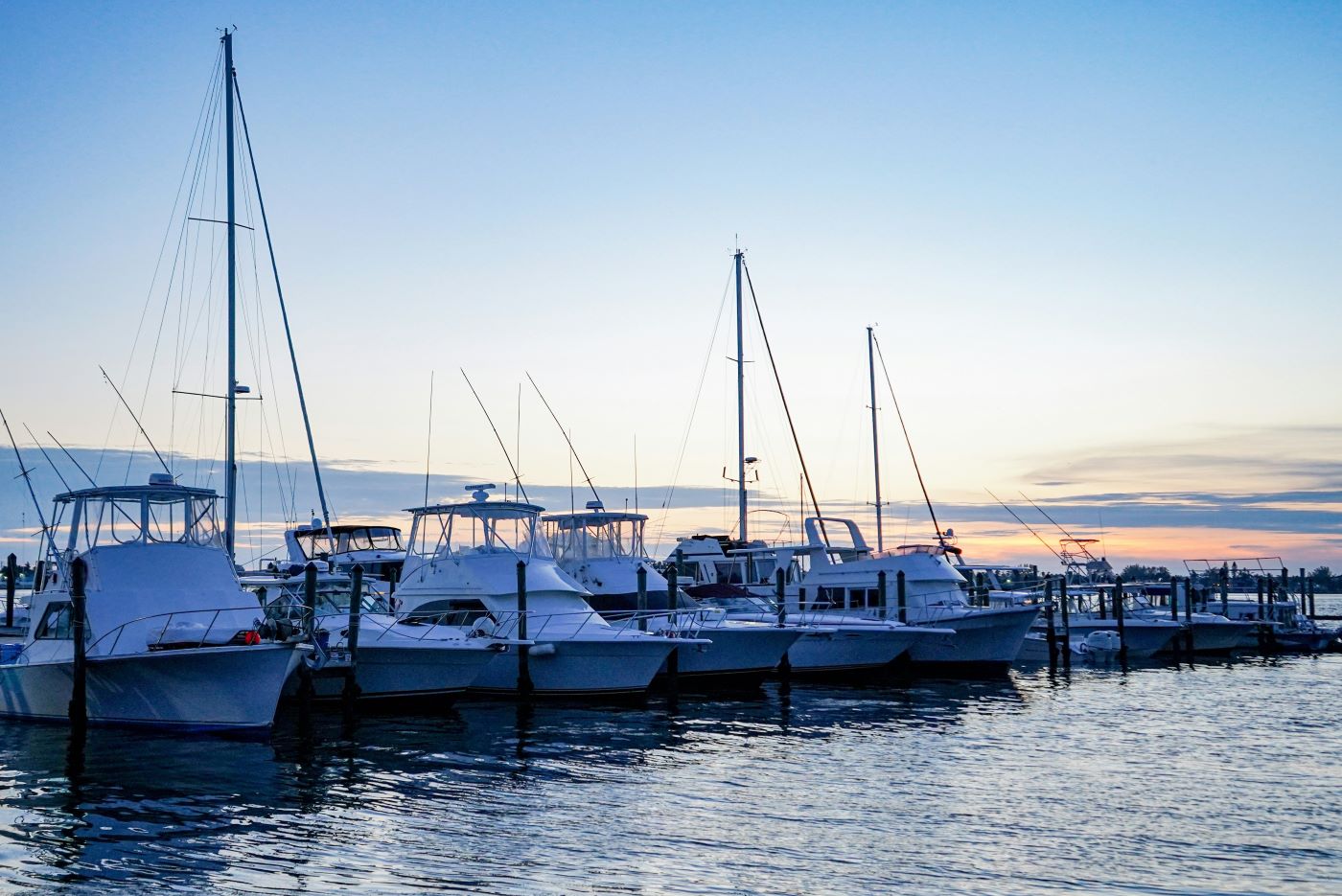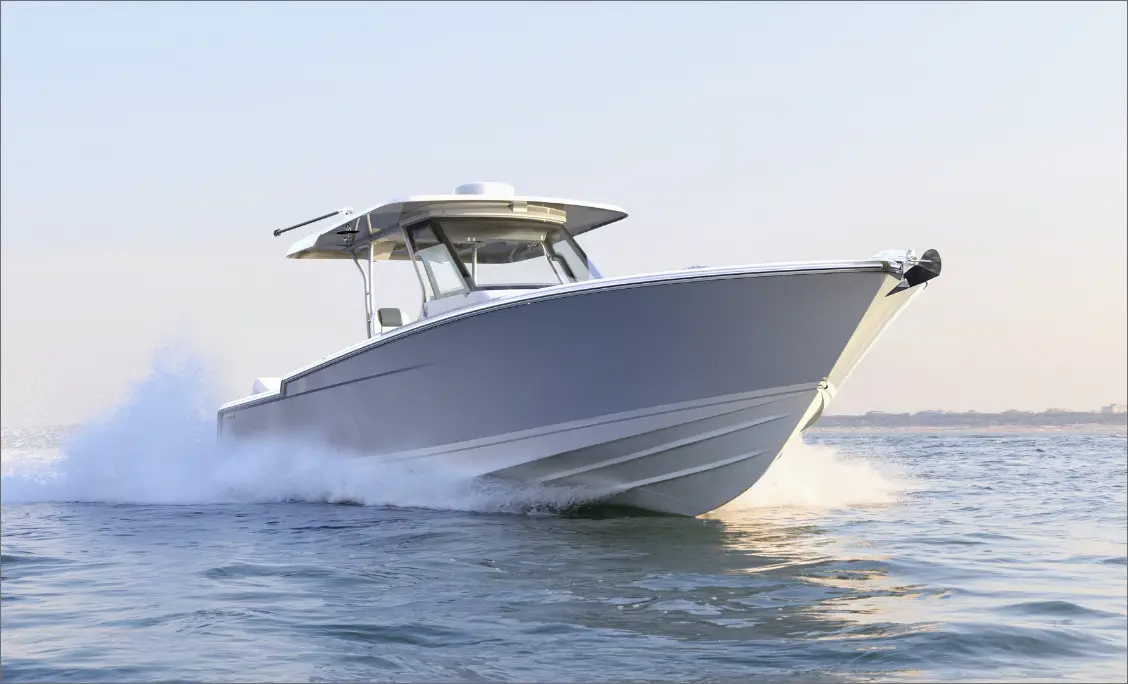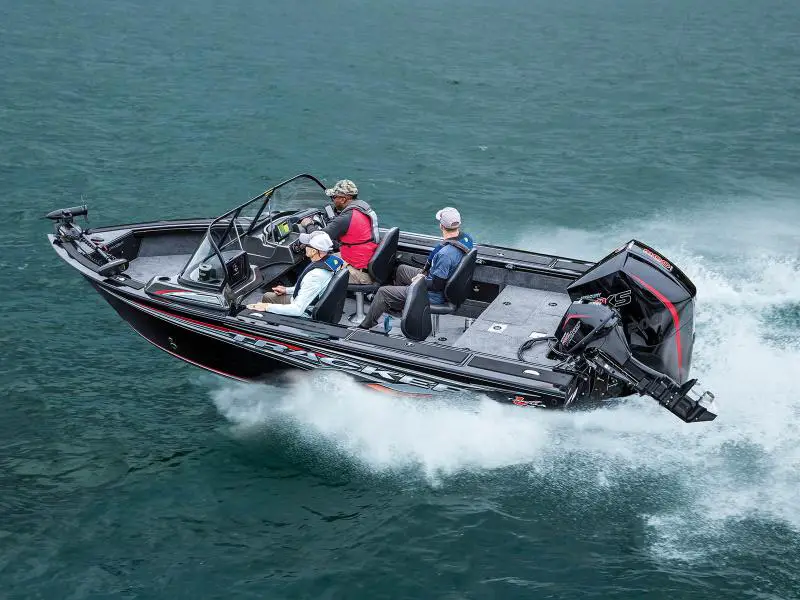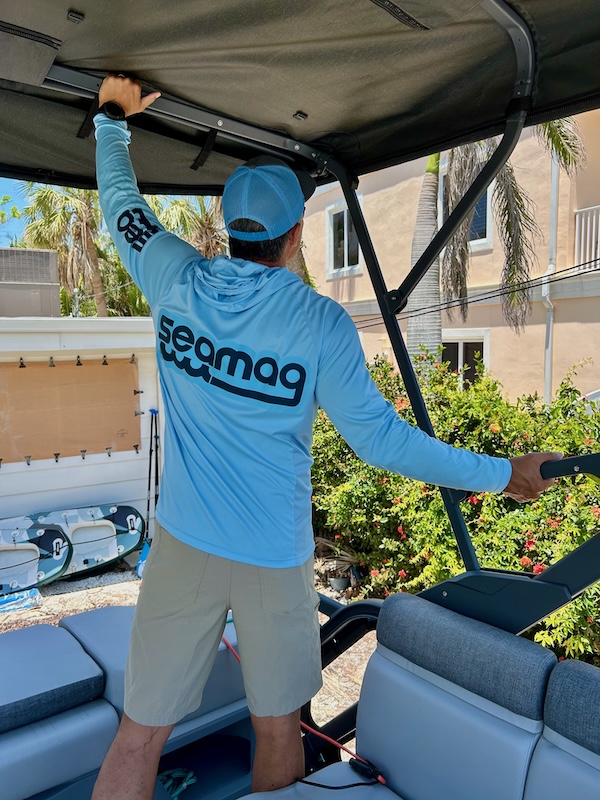Manatee Conservation Efforts: Protecting Endangered Gentle Giants
Manatees are fascinating marine mammals that glide through the warm waters of the Americas and Africa. They belong to the order Sirenia and are notable for their large size, gentle nature, and herbivorous diet. These "sea cows" are related to the elephant and the hyrax, which is surprising given their aquatic lifestyle.

One of the most striking features of the manatee is its paddle-shaped tail, setting it apart from similar creatures like dugongs.
There are three species of manatees: the West Indian manatee, the Amazonian manatee, and the African manatee. Each species has adapted to its unique environment, ranging from freshwater rivers to coastal marine areas.
Despite their bulky appearance, manatees show remarkable grace in their movements, using their strong tails to navigate and feed on aquatic plants.

Due to habitat loss, pollution, and human activities, manatee populations have faced many challenges and are now under various conservation efforts to ensure their survival.
Manatees play an essential role in their ecosystem by maintaining the health of aquatic plant life. They are slow-moving and often come into contact with humans, resulting in a range of interactions, both positive and negative.
Researchers continue to study manatees to develop more effective conservation strategies and to better understand these gentle giants.
The survival of manatees depends heavily on continued efforts to protect their habitats and minimize human threats.

Key Takeaways
- Manatees are herbivorous marine mammals with a distinct paddle-shaped tail.
- Three species of manatees exist, each adapted to different environments.
- Conservation efforts are crucial for manatee survival.
Classification and Anatomy
Manatees, also known as sea cows, are fascinating marine mammals with unique anatomy that helps them thrive in their aquatic habitats. They belong to a specific taxonomic group and have distinct physical features that make them well-suited to life in the water.
Taxonomic Hierarchy
Manatees are classified under the genus Trichechus and belong to the family Trichechidae. They are part of the order Sirenia, which also includes dugongs.
The scientific classification is as follows:
- Kingdom: Animalia
- Phylum: Chordata
- Class: Mammalia
- Order: Sirenia
- Family: Trichechidae
- Genus: Trichechus
There are three main species: the West Indian manatee (Trichechus manatus), the Amazonian manatee (Trichechus inunguis), and the African manatee (Trichechus senegalensis). Each species lives in different geographical regions, adapting to the specific conditions of their habitats.
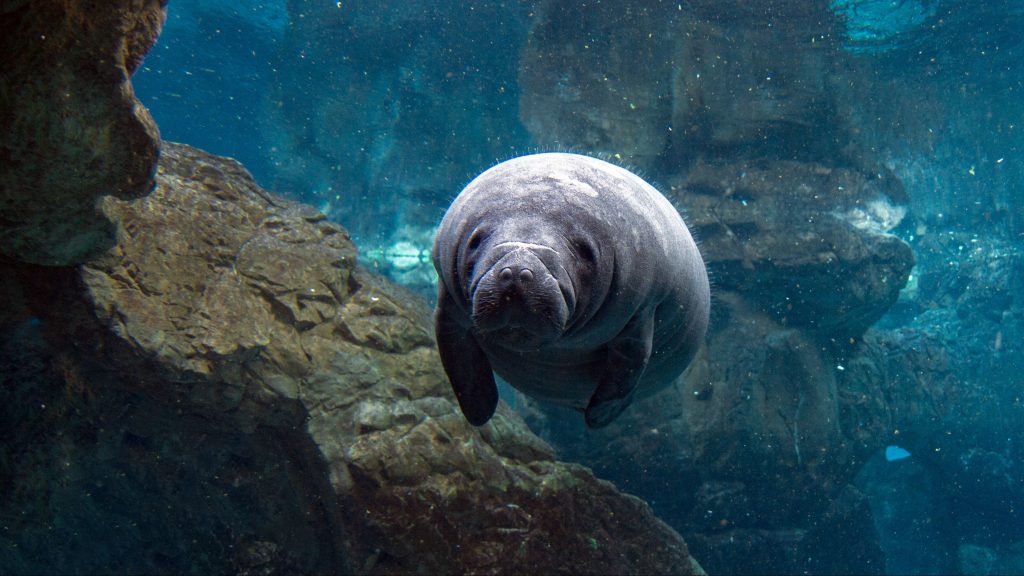
Physical Characteristics
Manatees have robust bodies adapted for an aquatic lifestyle. They can grow up to 13 feet long and weigh over 3,500 pounds.
Their bodies are covered with a layer of fat that helps with buoyancy and insulation. They move through the water using their powerful, paddle-shaped tails and steer with their front flippers.
The manatee's digestive system is fascinating, with intestines that can be up to 150 feet long to help process their plant-based diet.
They have nails on their flippers, akin to fingernails, which assist with grasping vegetation. Internally, manatees have dense bones that help to counteract buoyancy, and their lungs are positioned along their spines, aiding buoyancy control. Their teeth are continually replaced throughout their lives, a feature known as polyphyodonty.
Species and Distribution
Manatees are large, herbivorous marine mammals found in different parts of the world. There are three main species: the West Indian Manatee, the Amazonian Manatee, and the West African Manatee. Each species has its own unique habitat and distribution.
West Indian Manatee
The West Indian Manatee (Trichechus manatus) is divided into two subspecies: the Florida Manatee (Trichechus manatus latirostris) and the Antillean Manatee (Trichechus manatus manatus).
Members of this species are commonly found in coastal waters, rivers, and estuaries. The Florida Manatee mainly inhabits the waters around Florida, USA, while the Antillean Manatee is distributed throughout the Caribbean, Mexico, and parts of Central and South America. Both subspecies prefer warm shallow waters.
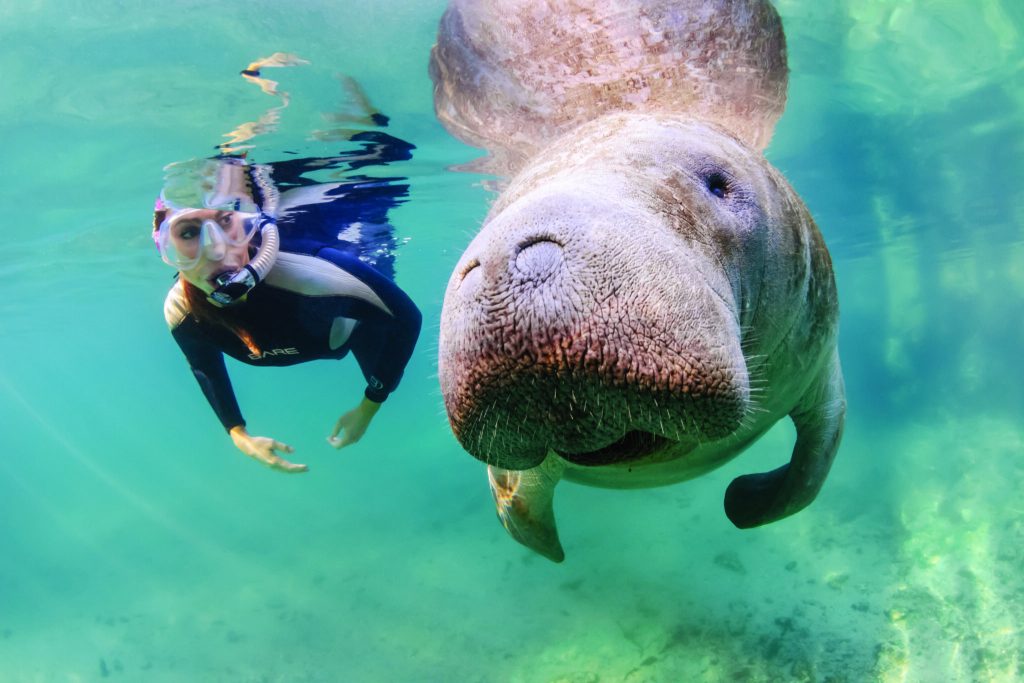
Amazonian Manatee
The Amazonian Manatee (Trichechus inunguis) is unique among manatees for inhabiting exclusively fresh waters. It is found in the Amazon Basin, particularly in rivers and lakes in Brazil, Colombia, and Peru.
Unlike its marine counterparts, the Amazonian Manatee does not venture into saltwater environments. This species is typically smaller than other manatees and has a dark, almost black skin. The habitat preferences mainly include calm, freshwater areas away from strong currents.

West African Manatee
The West African Manatee (Trichechus senegalensis) can be found in both fresh and saltwater environments. Its range extends along the west coast of Africa from Senegal to Angola.
This species inhabits rivers, coastal lagoons, and estuaries. They are adaptable and can move between fresh and brackish waters. Human activities, especially in coastal regions, pose significant threats to the West African Manatee's habitat.
African Manatee
The African Manatee refers to the same species as the West African Manatee (Trichechus senegalensis).
They thrive in West Africa's rivers, estuaries, and coastal areas. Their diet mainly includes aquatic vegetation and they play a crucial role in their ecosystem. They face threats from habitat degradation and hunting, making their conservation a priority.
Habitat and Ecology
Manatees live in both freshwater and marine environments. They prefer warm waters and are often found in areas rich in vegetation.
Habitat Preferences
Manatees are often found in coastal waters, rivers, "springs," and lagoons. They prefer warm environments since they are sensitive to cold temperatures. They are generally found in regions with water temperatures above 68°F (20°C). This preference drives them to migrate between freshwater and marine habitats.
Freshwater springs are important for manatees, especially in colder months. These springs provide a stable temperature that is crucial for their survival.
Manatees can also be seen in mangroves and seagrass beds along the coast. These areas offer not only warmth but abundant food sources.

Diet and Feeding Habits
Manatees are herbivores, primarily feeding on a variety of aquatic plants. Their diet includes seagrass, algae, mangrove leaves, and weeds found in both their freshwater and marine habitats. They use their flippers to hold vegetation while eating.
A manatee consumes about 10-15% of its body weight in vegetation every day. This means an average adult manatee may eat up to 150 pounds of food daily. They spend approximately 6-8 hours each day grazing.
Manatees play a critical role in their ecosystems by maintaining seagrass beds and keeping other aquatic plants from becoming too overgrown. Their constant grazing helps ensure that these underwater meadows remain healthy and productive.

Social Structure and Behavior
Manatees are generally solitary animals but are known to form small groups called aggregations during certain times of the year or while feeding. They communicate through a range of vocalizations, like chirps and squeaks.
In colder months, manatees are often seen in larger groups around warm-water springs. These gatherings, although temporary, are vital for their thermoregulation.
Mothers and calves share a strong bond, with calves staying close to their mothers for up to two years. Manatees exhibit gentle and curious behavior, often interacting with their environment and each other in non-aggressive ways.

Conservation Status
Manatees, particularly the Florida manatee, have faced significant threats over the years but have benefited from conservation measures. This has resulted in varying classifications from endangered to threatened.
Threats to Survival
Manatees face various threats that endanger their populations. Watercraft collisions are a major hazard, often resulting in injuries and deaths. Meanwhile, pollution from runoff and waste contributes to contaminated habitats, affecting manatee health.
Moreover, red tide, a harmful algal bloom, can lead to mass die-offs by producing toxins that affect both the manatees and their food supply.
Habitat loss due to coastal development and climate change further compounds their survival challenges. Meanwhile, hunting, although not as prevalent today, historically reduced their numbers significantly. These factors combined make manatees vulnerable and at risk of decline.

Conservation Efforts
Conservation efforts have played a crucial role in boosting manatee numbers. The U.S. Fish and Wildlife Service and organizations like the Save the Manatee Club work tirelessly in this area.
Through public awareness campaigns, habitat conservation, and legislative action, these organizations have contributed significantly to the recovery of manatee populations.
Captive breeding programs and research initiatives have provided insight into manatee health and behavior, guiding further conservation strategies. Meanwhile, rescue and rehabilitation efforts for injured or sick manatees are also critical, giving these creatures a second chance at life in the wild.
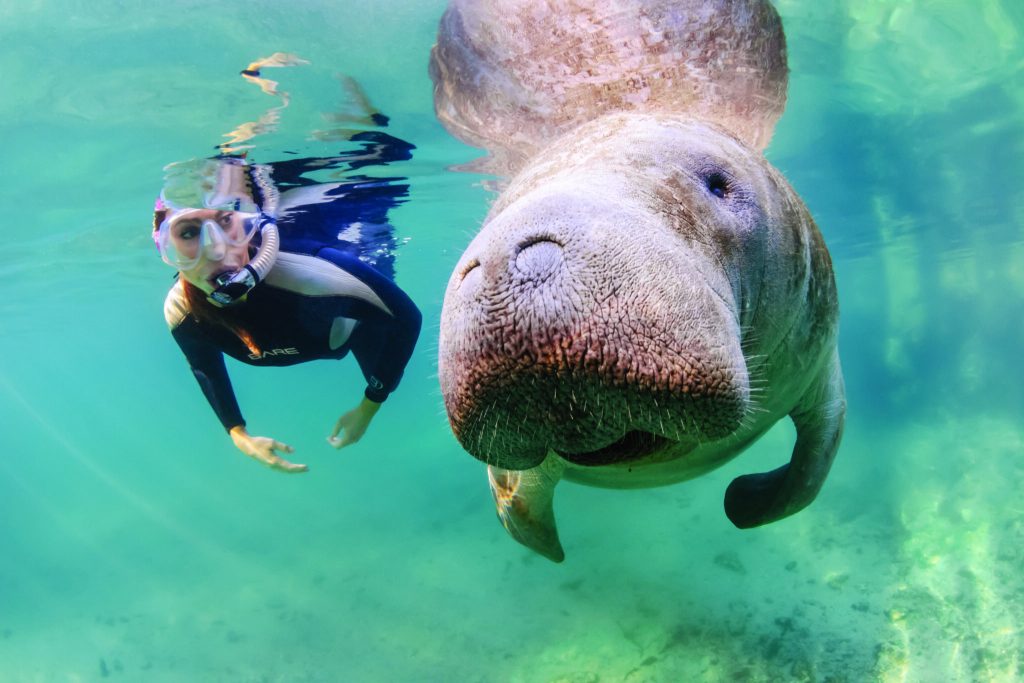
Legal Protection
Manatees are protected under several laws and regulations. The U.S. Endangered Species Act (ESA) played a pivotal role when manatees were listed as endangered in the 1970s. Due to successful conservation efforts, they were reclassified as threatened, reflecting their improved status but still recognizing ongoing risks.
State laws in Florida, where manatees are most commonly found, offer additional protection. These include boating speed zones designed to minimize watercraft collisions. Furthermore, federal regulations under the Marine Mammal Protection Act help protect manatees from hunting and harassment.
Legal protection ensures continued focus and resources dedicated to preserving manatee populations and addressing the threats they face.
Reproduction and Life Cycle
Manatees reproduce through sexual mating, with females reaching maturity faster than males. After a gestation period, manatees give birth to calves, which they nurse and protect. Manatee calves grow through several stages before reaching full maturity.
Mating Habits
Manatees mate year-round, though some areas may see peaks in activity. Females are ready to mate at around 5 years old, while males reach sexual maturity at about 9 years. During mating, a group of males, known as a mating herd, follows a single female.
Females usually mate with several males over a few weeks. This increases the chances of successful reproduction. The mating strategy helps ensure a higher number of offspring in the population.
Gestation and Birth
After mating, the gestation period for a manatee is about 12 months. The female usually gives birth to a single calf, although twins can occur but are rare. Calves are born fully developed and can swim to the surface immediately for their first breath.
At birth, a calf generally weighs between 60 and 70 pounds and measures around 4 to 4.5 feet in length. The mother nurses the calf for up to two years, providing essential nutrition and protection from predators.
Growth and Development
Manatee calves grow steadily under the care of their mothers. They start eating vegetation alongside nursing within a few weeks. They stay close to their mothers, learning essential survival skills, like finding food and avoiding dangers.
Youth manatees, also known as juveniles, remain with their mothers for up to two years. They reach sexual maturity at about 5 years for females and around 9 years for males. Full-grown manatees can weigh up to 1,000 pounds and measure about 10 feet in length.
Manatees have a life span of 50 to 60 years in the wild, though some may live even longer under ideal conditions.
Human Interactions
Human interactions with manatees have a deep historical significance and continue to pose contemporary issues affecting their survival. The public's perception and myths surrounding these gentle creatures also play a crucial role in their conservation.
Historical Significance
Manatees, often called "sea cows," have a rich history of interactions with humans. Indigenous peoples once hunted them for their meat, hides, and bones. These materials were essential for tools and clothing.
Early European explorers, including the Spanish, also hunted manatees. They believed the manatees were mermaids, as described by sailors. This led to significant population declines.
Manatee hunting continued into the 20th century. Laws were finally enacted to protect them, reflecting changing attitudes towards conservation. The Manatee Sanctuary Act established critical protections to ensure their survival.
Contemporary Issues
Today, human-related activities remain a significant threat to manatees. Watercraft collisions are a leading cause of injury and death. Increased boating activity in Florida's waters has led to more accidents.
Entanglement in fishing lines and ingestion of debris also pose risks. Fishermen and recreational boaters are urged to keep waterways clean to protect manatee habitats.
Conservation efforts have increased in recent decades. Organizations like the Florida Fish and Wildlife Conservation Commission (FWC) and National Geographic highlight the importance of protecting manatees. Stricter laws and public awareness campaigns have been critical in reducing manatee mortality.
Public Perception and Mythology
Public perception of manatees has evolved over time. Historically, they were viewed as a resource, but today, they are seen as symbols of gentle marine life.
Folklore and mythology have often cast manatees in the role of mermaids. Sailors' tales contributed to this myth, sparking both fascination and fear.
Modern campaigns aim to dispel myths and promote accurate knowledge about manatees. The media, including outlets like National Geographic, play a key role in educating the public. Positive perception and support from the public are essential for ongoing conservation efforts.
Physiology and Adaptations
Manatees, often called sea cows, have unique physiological traits and adaptations that allow them to thrive in their aquatic habitats. These include adjustments to their metabolic rate, adaptations for underwater living, and specialized sensory systems.
Metabolic Rate and Energy Requirements
Manatees have a low metabolic rate compared to other mammals of their size. This slow metabolism means they don't need to eat as much as other large animals, yet it also necessitates warm water environments. They consume large amounts of seagrass and other aquatic plants to meet their energy needs. Manatees spend up to eight hours a day grazing. Their digestive system is highly efficient, extracting the necessary nutrients from their plant-heavy diet.
Adaptations to Aquatic Environment
Manatees are well-adapted to life underwater. They have unique pectoral flippers that help them steer and crawl along the sea floor. These flippers have three to four nails at the ends, which are used for manipulating food and other objects.
Although slow swimmers, averaging around 3-5 mph, they can briefly reach speeds up to 20 mph. Manatees can stay submerged for up to 20 minutes when resting, though they generally surface every few minutes to breathe. Their large, paddle-shaped tail aids in swimming and maneuverability.
Sensory Systems and Communication
Manatees rely heavily on their sensory systems for navigation and communication. Their small eyes provide good vision both above and below water. They have a keen sense of touch, with sensory hairs covering their bodies that detect changes in the environment.
Manatees communicate using a series of vocalizations, which can include squeaks, chirps, and whistles. These sounds are crucial for mother-calf bonding and can be heard over long distances underwater. Their large, mobile upper lips also help them forage for food and interact with their environment.
Manatee Research and Study
Manatee research has evolved significantly over the past decades. Scientists employ a variety of techniques to understand these marine mammals better and protect their habitats.
Research Techniques and Methodologies
Scientists use several methods to study manatees. Photo-identification is one of the key techniques, where individual manatees are identified by their unique scar patterns. USGS scientists have documented over 3,000 manatees using this method since 1978.
Telemetry is another important tool. Researchers attach radio or satellite transmitters to manatees to track their movements and behavior. This technology helps in understanding migration patterns and identifying critical habitats.
Aerial surveys are also utilized to count manatee populations. Researchers fly over water bodies and record manatee sightings, providing population estimates and spotting trends. These combined methodologies offer a comprehensive approach to manatee study.
Key Discoveries and Findings
Manatee research has led to significant findings. One of the key discoveries is the identification of essential habitats, such as warm-water refuges. Manatees frequent these areas during colder months to maintain their body temperature.
Studies have also highlighted the threats faced by manatees. Boat collisions are a leading cause of injury and mortality. Research efforts have thus focused on implementing boat speed zones and other protective measures to reduce these incidents.
Another important finding is related to the dietary needs of manatees. They primarily feed on seagrass and other aquatic vegetation. Protecting these food sources is crucial for their survival, as loss of seagrass beds due to pollution and climate change poses a significant threat.
Future Research Directions
Future research will likely focus on several key areas. There is a need to better understand the effects of climate change on manatee populations. Rising water temperatures and changing habitat conditions could impact their survival.
Genetic studies are also expected to play a significant role. Understanding the genetic diversity of manatee populations can help in conservation planning and ensuring their long-term viability.
Another direction is the development of new technologies. Improved tracking devices and non-invasive research methods will enhance the ability to monitor manatees without disturbing them. Collaborating with international research institutions could also expand knowledge and protection efforts for manatees globally.
Cultural and Economic Importance
Manatees hold a special place in Florida's history and play a vital role in the state's economy. Their significance extends beyond the waters they inhabit to the cultural and economic fabric of the region.
Cultural Significance
Manatees, often called "sea cows," are iconic to Florida. They are featured in local art, festivals, and educational programs targeted at both children and adults. This deep-rooted connection stems from their gentle nature and unique appearance, which makes them endearing to many.
Historically, manatees have inspired various myths and stories among indigenous peoples and early settlers. Today, manatees continue to serve as symbols of native wildlife conservation. They remind residents and visitors of the importance of protecting Florida's natural habitats.
Economic Impact of Conservation
Manatees contribute significantly to Florida's tourism industry. Sites such as Blue Springs State Park attract thousands of visitors annually who come to observe these fascinating creatures. This eco-tourism generates substantial revenue for the local economy, benefitting hotels, restaurants, and various tour operators.
Efforts to conserve manatees also create jobs in areas like wildlife management, research, and environmental protection. By prioritizing manatee conservation, the state can boost its economy while ensuring the survival of these important animals. Moreover, healthier manatee populations help maintain the balance of underwater ecosystems, indirectly supporting the broader fishing and boating industries.
Frequently Asked Questions
Manatees are large marine mammals known for their gentle nature and unique appearances. They thrive in warm water environments and have specific dietary needs and care requirements.
What is the scientific name of the manatee?
The scientific name of the manatee is Trichechus. There are three species of manatees: the West Indian manatee, the West African manatee, and the Amazonian manatee.
How much does an average manatee weigh?
An average adult manatee typically weighs between 800 and 1,200 pounds. In some cases, manatees can grow much larger. The biggest recorded manatee weighed over 3,500 pounds.
What does a manatee's diet consist of?
Manatees are herbivores. Their diet mainly consists of a variety of aquatic plants such as seagrass, algae, and water hyacinths. They spend a good part of their day grazing on vegetation.
Are manatees considered endangered species?
Manatees were once considered endangered but are now listed as vulnerable. They still face threats from habitat loss, boat strikes, and water pollution, which affect their population and health.
What should you do if you encounter a manatee in the wild?
If you encounter a manatee in the wild, it is important to observe from a distance. Feeding, touching, or disturbing manatees is illegal. Report any distressed, injured, or dead manatees to wildlife authorities.
How do manatee offspring, or calves, develop after birth?
Manatee calves are usually born after a gestation period of about 12 months. After birth, they stay close to their mothers for up to two years.
During this time, they learn survival skills and feed on both mother's milk and plants.
Charlie is Editor-in-Chief of Sea Magazine
